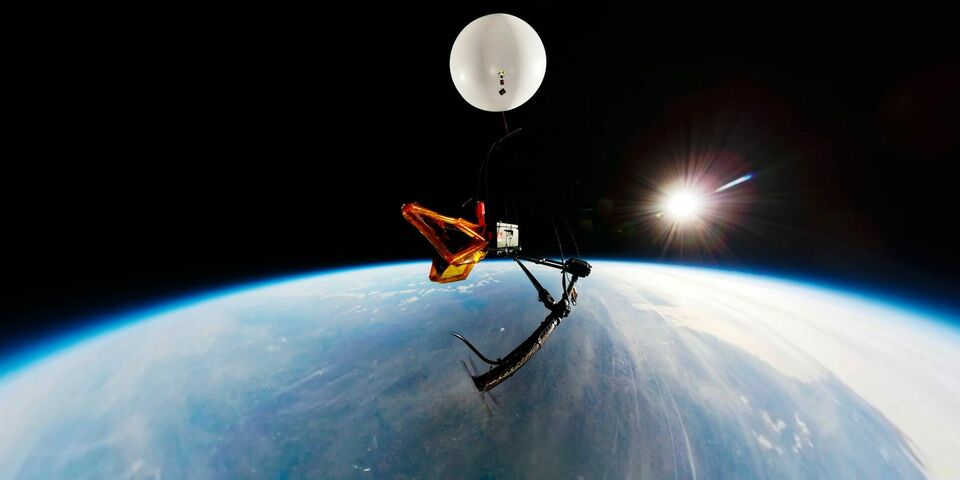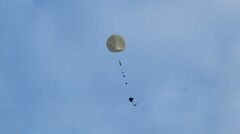Inflatable space antenna created by TU/e PhD candidate tested at 30-kilometer altitude
It is PhD candidate Niels Vertegaal’s dream to look at the origins of the universe. To this end, he developed an inflatable radio telescope that is to gaze deeply into space from the far side of the moon, free from earthly interference. Last week, the antenna was tested at an altitude of 30 kilometers.
Wednesday, December 6 is the day. PhD candidate at TU/e Niels Vertegaal (29) has been in the English town of Sheffield for a few days already, but today the weather conditions are good enough for his inflatable radio telescope and weather balloon to climb up into the stratosphere until they reach an altitude of around 30 kilometers. He sends a text from the testing grounds of the company Sent into Space in Engeland saying the contraption lifted off, with a picture as proof.
Once the weather balloon reaches an altitude of 20 kilometers, the antenna starts to unfold. After the contraptions hit 30 kilometers, with the air getting thinner and thinner, the balloon will start bloating due to the large pressure difference, and eventually tear. If all goes well, in the short period that precedes this Vertegaal will have been able to run a sufficient number of measurements to determine whether the antenna is functioning properly. A parachute is to bring the equipment back to Earth safely and unharmed.
Every gram counts
Why an inflatable antenna? “Because every gram that goes into space is very costly,” Vertegaal explains to Cursor a week before departure. “So the question is how you can make an antenna that’s large in space, but very small and light when it’s launched.”
Hence Vertegaal’s idea to make an inflatable antenna. “In a vacuum you only need a tiny bit of air to inflate something.” To test this, he took a prototype of the antenna to England, where a company specializes in executing and supervising these kinds of experiments.
Upon the ‘launch’, the antenna is contained in a small cube measuring 10x10x10 centimeters (1 liter). Inside is a paper thin film, which measures one meter square when unfolded. The film is covered by a 2-micrometer thick conductive layer of copper, which functions as a radio receiver. The process of unfolding the antenna is conducted by blowing a minimal amount of compressed air into its arms, followed by a small dose of CO₂. In a video in which Vertegaal is testing the antenna in the electronical laboratory of the Flux building, it looks like a balloon being inflated, slowly but surely revealing its final shape.
During the experiment, it turns out that the antenna does unfold completely, but later than Vertegaal had expected. “I still need to analyze the data, but I already saw that the antenna does work,” he says the day after the test. “Either way, I’m happy with how everything went.”
Space exploration
With his experiment, Vertegaal wants to prove that the concept of an inflatable antenna works. “I really hope that space exploration missions to the moon will end up embracing this idea,” he says. There is a consortium, which includes Radboud University Nijmegen and TU/e, that’s currently working on submitting a proposal to the European Space Agency. The goal is to use an inflatable antenna as a radio telescope on the far side of the moon. “With an antenna that can capture ultralow frequencies behind the moon, free from interference from earth, we expect to gather information on the origins of the universe,” says Vertegaal.




Discussion